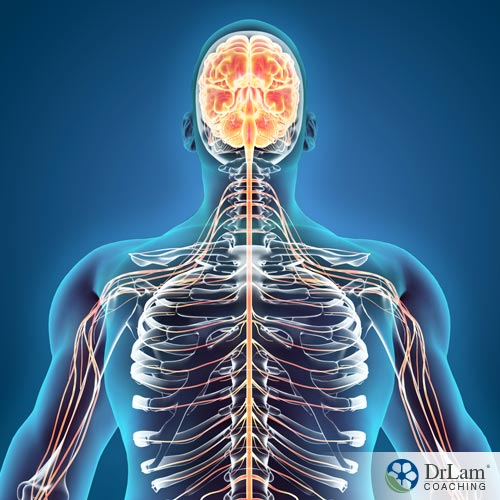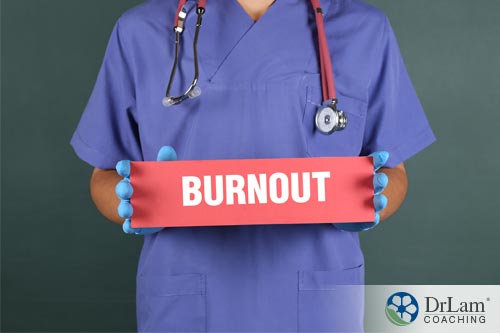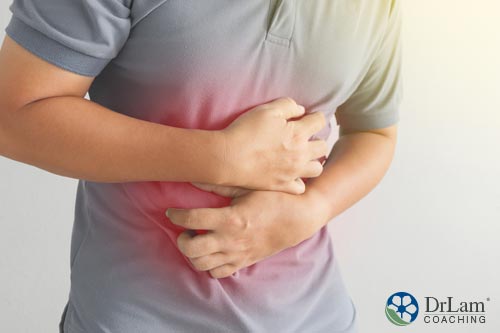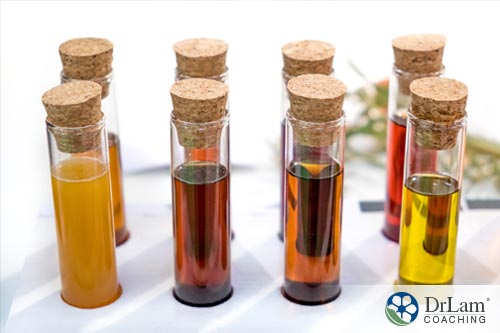 Certain health problems tend to occur in clusters or ‘families, often with related symptoms that have a common cause. One such cluster, dysautonomia, refers to a collection of dysfunctions relating to the autonomic nervous system. Mast Cell Activation Syndrome (MCAS) is one of these conditions.
Certain health problems tend to occur in clusters or ‘families, often with related symptoms that have a common cause. One such cluster, dysautonomia, refers to a collection of dysfunctions relating to the autonomic nervous system. Mast Cell Activation Syndrome (MCAS) is one of these conditions.
Other conditions associated with dysautonomia include:
The list goes on. Many of these conditions seem to have nearly the same, though wide, set of symptoms. Many of these dysautonomia conditions include symptoms such as:
Most of these health issues are well known, but MCAS, also called Mast Cell Activation Disorder (MCAD), is unique in that it has only recently been recognized by the medical establishment. Those with MCAS have overactive mast cells that release too many chemicals into the body at inappropriate times, resulting in a variety of symptoms that, up until recently, have been difficult for physicians to identify.
Interestingly, many people with POTS also have MCAS. POTS, or Postural Orthostatic Tachycardia Syndrome, is a condition that results in an unusually fast heart rate (tachycardia) when transitioning from lying down to standing up.
Research has not, as yet, given a clear indication of just how much these two conditions overlap, but they may be connected with adrenal fatigue, as symptoms presented in all three conditions can be very similar and seem to have similar root causes.
POTS is mostly prevalent in women (about 80%) of menstrual age. The condition usually arises after a bacterial or viral infection or after a growth spurt. Some women develop it during pregnancy.
What happens when you have POTS physiologically is that, when standing quickly, blood rushes from the upper extremities to the heart due to gravity. There is less oxygen for the brain and the possibility of fainting, so the hormone norepinephrine is released by the brain as an alert. The norepinephrine makes its way to the heart and peripheral blood vessels, where it increases the heart rate by narrowing the blood vessels, increasing blood flow to the brain so that you don’t faint.
Epinephrine (also called adrenaline) is released during stressful situations to ensure blood flow to the brain, as this is deemed necessary for survival. In some situations, however, activation of the body’s sympathetic response (for fight or flight) fails, resulting in lower blood pressure and increased heart rate.
 The adrenal glands secrete the hormones epinephrine, norepinephrine, and cortisol in response to stress. These hormones ensure your body readies itself for survival. When the stressful situation continues for a prolonged period, the adrenals needs to produce more hormones to ensure survival. After a while, they become taxed, leading to the burnout so common in the later stages of adrenal fatigue.
The adrenal glands secrete the hormones epinephrine, norepinephrine, and cortisol in response to stress. These hormones ensure your body readies itself for survival. When the stressful situation continues for a prolonged period, the adrenals needs to produce more hormones to ensure survival. After a while, they become taxed, leading to the burnout so common in the later stages of adrenal fatigue.
Because of its connection to norepinephrine, the adrenals, and how the body responds to the stress of standing, POTS is strongly associated with Mast cell activation and adrenal disorders in both its action and symptoms. It also has a widespread effect on your autonomous nervous system.
MCAS was only recognized as a condition in 1991 and given a name in 2007.
In order to understand MCAS, one first needs to understand what mast cells are and how they function.
Mast cells, also called mastocytes or labrocytes, are a certain type of white blood cell. Originating in the bone marrow, these cells travel to the different tissues of the body.
Each mast cell has what is known as secretory granules, which contain mediators. These are biologically active molecules, that, once a mast cell is triggered, are secreted and cause an allergic or inflammatory response. These biologically released mediators include histamines and leukotrienes, amongst others.
Mast cell triggers depend on the person, but there are a number of possibilities, including:
Under normal circumstances, these mast cells have a protective role, helping wounds heal and defending your body against pathogens.
They are found throughout the body, including in the stomach and intestine lining, in the connective tissues, and in the skin. The chemical trigger most often released when these mast cells face a problem is histamine, which forms an important part of the body’s immune defense system.
Mast cells also help wounds heal, as they gather around a wound to form a scab. According to research, they may also have a role to play in blood vessel growth, and there are indications they are essential to our continued survival.
Sometimes, however, things go wrong with mast cells or how they are produced, which can cause Mast Cell Activation Syndrome, among other conditions.
MCAS should not be confused with mastocytosis, however. MCAS is associated with a severe allergic reaction due to mast cells releasing too many chemicals into the body. Mastocytosis, on the other hand, is the result of a genetic mutation that causes the body to produce too many mast cells.
MCAS is a condition that occurs when the mast cells get activated too easily by a trigger, thereby releasing their chemical mediators - histamine and leukotriene. The body may be in a state of hyperactivation. This results in a number of symptoms that, at first glance, may seem totally unrelated. Amongst these are bloating, skin rashes, abdominal pain, nausea, aches and pains, and headaches, to name a few.
 Histamine is a chemical made by the immune system that helps the body get rid of anything causing it stress. It does this by helping the body get rid of allergy triggers (allergens) by causing you to sneeze or itch. Think of the classic symptoms associated with hayfever. This is how histamine forms a part of your body’s defense system, the immune system.
Histamine is a chemical made by the immune system that helps the body get rid of anything causing it stress. It does this by helping the body get rid of allergy triggers (allergens) by causing you to sneeze or itch. Think of the classic symptoms associated with hayfever. This is how histamine forms a part of your body’s defense system, the immune system.
The process by which your body reacts is simple. Once an allergen is identified, your immune system is triggered. Mast cells are sent to the parts of the body affected, i.e. blood, nose, gut, skin, mouth, and lungs, and there they release the histamines carried around inside the granules inside them. These granules are tiny storage areas surrounded by membranes. Once the histamines are released from the granules in the mast cells, they trigger an increase in blood flow to the affected area, causing inflammation. This, in turn, triggers other chemicals within the body to carry out repairs in the affected areas.
Histamine receptors in the nervous system are activated when this allergic reaction process starts. They bind to receptors in the blood vessels, thereby making the blood vessels more permeable. This results in hives, redness, swelling, and inflammation. It also causes contractions in the bronchial muscles, resulting in conditions such as asthma or anaphylaxis, which is life-threatening.
Histamine receptors found in the gut are located in your parietal cells, which secrete gastric juices. A histamine increase results in an increase in the secretion of gastric acids. This often results in peptic ulcers and gastroesophageal reflux disease (GERD).
Histamine may also inhibit the production of certain neurotransmitters in the brain, including dopamine and serotonin. Research indicates that when the production of these hormones is compromised, anxiety increases. Histamine has also shown to be implicated in a number of other mental disorders, including Alzheimer's, schizophrenia, and attention deficit hyperactivity disorder (ADHD).
There are, as previously mentioned, many triggers that could cause this release of histamine, including the environment, food, and physical factors.
Leukotrienes are another compound released by mast cells. There are two families of leukotrienes, and each has a unique presentation in regards to symptoms and areas of action in the body.
The first family is involved in cases of neutrophil-dependent inflammation. The main function of neutrophils is to kill as many germs as possible. They are the most abundant immune cells found in the blood, making up 60%, and are the body’s first line of defense, killing off foreign invaders by “engulfing” them, thereby making them harmless.
Neutrophils mainly act in inflammation-related illnesses such as psoriasis, inflammatory bowel disease, and cystic fibrosis.
The second leukotriene family is cysteinyl-leukotrienes. They primarily act on the airway tissue and bronchial smooth muscles. They are acutely active in cases of infection and asthma, for example, where they reduce airflow to the alveoli.
Prostaglandin, also released by mast cells, is primarily found in the central nervous system and peripheral tissues. It has an inflammatory action.
Prostaglandin helps with the regulation of sleep and perception of pain. It is also a strong bronchoconstrictor and is considered ten times more potent than histamine. Those who suffer from asthma can have prostaglandin levels more than 150 times that of those who have never suffered an attack. Elevated levels of prostaglandin have also been found in those who suffer from chronic coughing.
 In those with asthma, prostaglandin may cause airway inflammation and hyperreactivity and inhibit eosinophil cell death. Eosinophil cells play an important role when it comes to allergies. If their removal is inhibited, the result is an inflammatory illness such as asthma.
In those with asthma, prostaglandin may cause airway inflammation and hyperreactivity and inhibit eosinophil cell death. Eosinophil cells play an important role when it comes to allergies. If their removal is inhibited, the result is an inflammatory illness such as asthma.
Mast cells, in many instances, are often paired with neurons and autonomic nerve fibers. Besides histamine, leukotrienes, and prostaglandin, they secrete up to 200 different chemicals, each with its own action and response to different environmental stimuli.
In the case of those with Mast Cell Activation Syndrome, the mast cells secrete these chemicals inappropriately.
Stress, whether the source is physiological, psychological, or environmental in nature, directly impacts the neuroendocrine system and mast cell activation components.
The body’s defense against any stressor begins with the hypothalamic-pituitary-adrenal (HPA) hormonal axis. This term collectively refers to signals regulating what these glands do. This includes the hypothalamus, the pituitary gland, and the two adrenal glands (each situated on top of a kidney). The HPA axis, besides handling stress, also plays a role in digestion, metabolism, sexuality, emotions, and immune functions.
The job of the hypothalamus, which is situated in the brain, is to regulate metabolism and release neurohormones. It also assists with hunger, thirst, sleep, energy levels, body temperature, and circadian rhythm.
The pituitary gland also releases a number of hormones. Amongst these are thyroid stimulating hormone, human growth hormone, and a number of others. They are released when the hypothalamus sends chemical signals to the pituitary gland.
The adrenal glands, in their turn, synthesize and release corticosteroids, such as cortisol and catecholamines, such as norepinephrine and epinephrine, in response to messages received from the pituitary gland. They are also responsible for the manufacture of androgens (sex hormones) and aldosterone, which helps blood pressure regulation.
 When under stress, the hypothalamus releases chemical messengers, known as corticotropin releasing hormone (CRH), that stimulate the pituitary gland to release adrenocorticotropic hormone (ACTH), which then stimulates the adrenal glands to produce and secrete cortisol.
When under stress, the hypothalamus releases chemical messengers, known as corticotropin releasing hormone (CRH), that stimulate the pituitary gland to release adrenocorticotropic hormone (ACTH), which then stimulates the adrenal glands to produce and secrete cortisol.
In turn, the heightened cortisol production sends stimuli to the hypothalamus and pituitary gland to slow down their hormone production. Usually, once the stressful situation has passed, the body returns to normal, and all hormone production resumes at its usual pace.
When stress continues for prolonged periods, however, the hypothalamus produces an increasing amount of CRH, which in turn leads to an increase in cortisol production. If this continues for too long, adrenal fatigue and its accompanying symptoms are usually the result.
Additionally, CRH binds to receptors on mast cells and stimulates the release of certain contents.
Histamine can be a stressor that triggers this process.
Whereas histamine causes inflammation, cortisol is anti-inflammatory. Thus, your body releases extra cortisol as a response to the inflammation caused by the histamine. This puts a strain on your adrenal glands because they have to manufacture ever-increasing amounts of cortisol to counteract the histamine.
If the situation continues for too long and Adrenal Fatigue Syndrome (AFS) sets in, especially in the advanced stages, the body’s cortisol production can no longer keep up with demand and production decreases.
The end result is a state of inflammation with a number of diverse symptoms:
 Using the NeuroEndoMetabolic (NEM) Stress Response paradigm, much of the inflammation in the body stems from the immune system, digestive system, and microbiome. Inflammation of the gut can present as Irritable Bowel Syndrome (IBS or leaky gut). Interestingly, those with IBS also show a marked increase in histamine secretion from their mast cells, indicating a strong correlation between IBS and Mast Cell Activation Syndrome. The higher the histamine concentration, the worse the symptoms seem to be. Mast cells, as you know, are part of the immune system. Thus there is a connection between the immune system and the digestive system, both which are integral to the inflammation circuit.
Using the NeuroEndoMetabolic (NEM) Stress Response paradigm, much of the inflammation in the body stems from the immune system, digestive system, and microbiome. Inflammation of the gut can present as Irritable Bowel Syndrome (IBS or leaky gut). Interestingly, those with IBS also show a marked increase in histamine secretion from their mast cells, indicating a strong correlation between IBS and Mast Cell Activation Syndrome. The higher the histamine concentration, the worse the symptoms seem to be. Mast cells, as you know, are part of the immune system. Thus there is a connection between the immune system and the digestive system, both which are integral to the inflammation circuit.
Because of the increase in inflammation, there is also initially an increase in cortisol, which results in the suppression of the immune system. This leads to inhibited digestion and suppresses the good bacteria in the gut, causing IBS or exacerbating it.
In the latter stages of adrenal fatigue, there is a progressive decline in the production of cortisol, as the adrenals can no longer keep up the supply demanded by the body to counteract the effects of the histamine reaction in the gut. This, in turn, leads to an increase in gut inflammation and a dysregulation between good and bad gut bacteria, which worsens IBS.
The symptoms of this condition include:
They symptoms for MCAS overlap with many of the disorders belonging to this family. Sufferers may present only a few symptoms or many. No two sufferers necessarily present the same symptoms. It depends on the person.
Common MCAS symptoms include:
Although someone with Adrenal Fatigue Syndrome does not necessarily have MCAS, someone with MCAS has many symptoms of adrenal fatigue.
Fortunately, mast cell activation is something that can be tested for in order to determine whether you have it. With many ailments in this family, conclusions are arrived at by a process of deduction. In the case of MCAS, however, while the medical establishment might initially misidentify the condition, you can ask for testing if you feel it might be the source of your issues.
A systematic approach is suggested for identifying this condition. This includes making sure you meet all the criteria to be considered for it. You also need to have two to three symptoms relating to the organs that suggest the activation of mast cells, such as diarrhea, wheezing, flushing, or urticaria.
Before considering MCAS, the possibility of conditions such as IBS, medullary thyroid cancer, POTS, pheochromocytoma, estrogen or testosterone deficiency, reactions to possible environmental toxins, autoimmune conditions, and allergies all must first be eliminated.
 This test measures the levels of your histamine, prostaglandins, and leukotrienes. If high levels are present, further testing can be conducted to rule out mastocytosis. Unlike MCAS, those with mastocytosis have elevated levels of white blood cells.
This test measures the levels of your histamine, prostaglandins, and leukotrienes. If high levels are present, further testing can be conducted to rule out mastocytosis. Unlike MCAS, those with mastocytosis have elevated levels of white blood cells.
Tryptase is a marker showing the amount of degranulation that has taken place in mast cells. Tryptase levels that are over the normal count but under 20 ng/ml indicate the possibility of Mast cell activation. When over 20 ng/ml, it indicates the probability of systemic mastocytosis.
It needs to be comprehensive, including serum magnesium levels.
A bone marrow biopsy can indicate the presence of mastocytosis. If the biopsy is negative, it effectively eliminates this similar condition and indicates the possibility of MCAS.
In many instances, when someone has MCAS the tryptase and histamine levels present themselves as normal, so these tests often need to be done twice: once at baseline, and once when you are manifesting symptoms of the condition.
Generally speaking, someone with anaphylaxis could conceivably have MCAS, although not everyone with MCAS necessarily has anaphylaxis.
In cases where one proves positive on tests and there are no clinical markers present, a MCAS diagnosis may still be considered.
In conventional medicine, the symptoms of MCAS are often addressed, but the source is not identified. In many cases, people only discover MCAS years after the condition presents itself. Most methods of managing the syndrome include H1 and H2 antihistamines, or their generic counterparts, along with mast cell stabilizers, such as cromolyn sodium and ketotifen.
The difference between H1 and H2 antihistamines is primarily their area of action:
H1 antihistamines work on H1 histamine receptors such as those found on smooth muscle cells throughout the body. These antihistamines are those that are often bought over the counter or recommended by doctors.
H2 histamines work on H2 histamine receptors. H2 histamine receptors bind with histamine in the same way as H1 histamine receptors, except that they are found in the stomach lining. When these receptors are stimulated, they cause some symptoms related to MCAS to manifest, such as indigestion, an increase in stomach acid production, and other associated issues. These antihistamines are also available over the counter or via your doctor.

As with most medications, the use of antihistamines in cases of MCAS should be judicious and not undertaken without consulting a healthcare professional.
Cromolyn Sodium is an anti-inflammatory medication. As such, it prevents the body from releasing inflammation-causing substances such as histamine. Cromolyn sodium is commonly used by asthmatics to prevent bronchospasms typically brought on by pollutants, exercise, or air-born chemicals. It is also commonly used to manage MCAS.
If you have any of the above-mentioned conditions, make sure to mention them to your healthcare professional as incorrect dosage could have dire results.
Ketotifen is a noncompetitive H1-antihistamine and mast cell stabilizer. It is only available through your doctor, and it reduces the severity of asthma and other bronchial manifestations of MCAS. It works by inhibiting the release of mast cell activation contents resulting in asthma and inflammation.
Unfortunately, most medications aimed at managing MCAS are aimed at addressing the various symptoms while suppressing certain actions in the body. They do not address the root cause of the problem.
The first step in addressing MCAS from a natural perspective is through diet. This means cutting out foods that induce a histamine reaction and concentrating on low histamine foods. Foods naturally high in histamine include pickled and canned foods, smoked meat products, beans and pulses, shellfish, cocoa-based products, fast foods/junk foods, sugar, and artificial coloring and preservatives.
 Low histamine foods include most fresh fruit, chicken, meat, and fish. You can also try some fresh vegetables (not tomatoes), grains (such as rice, oats, spelt and corn-based pasta, and yeast free rice bread), milk substitutes such as coconut and rice milk, leafy herbs, and some herbal teas (green tea).
Low histamine foods include most fresh fruit, chicken, meat, and fish. You can also try some fresh vegetables (not tomatoes), grains (such as rice, oats, spelt and corn-based pasta, and yeast free rice bread), milk substitutes such as coconut and rice milk, leafy herbs, and some herbal teas (green tea).
Certain supplements also help with the problems surrounding MCAS. They include:
As is the case with POTS and other dysautonomia conditions, MCAS plays a significant role in the occurrence of adrenal fatigue, as it acts directly on the body’s autonomic nervous system and its accompanying functions. The symptoms of the two conditions overlap to a large extent, and they may have the same root cause.
In order to manage mast cell activation, as with other conditions in the dysautonomia family, a holistic approach, instead of a symptomatic approach, may be the only way to affect a long-term solution.
You could, quite conceivably, have both. Mast Cell Activation Syndrome causes your body to increase its cortisol production, trying to reduce inflammation. If the condition persists, your cortisol production will finally decrease as the adrenal glands become exhausted, resulting in adrenal fatigue.